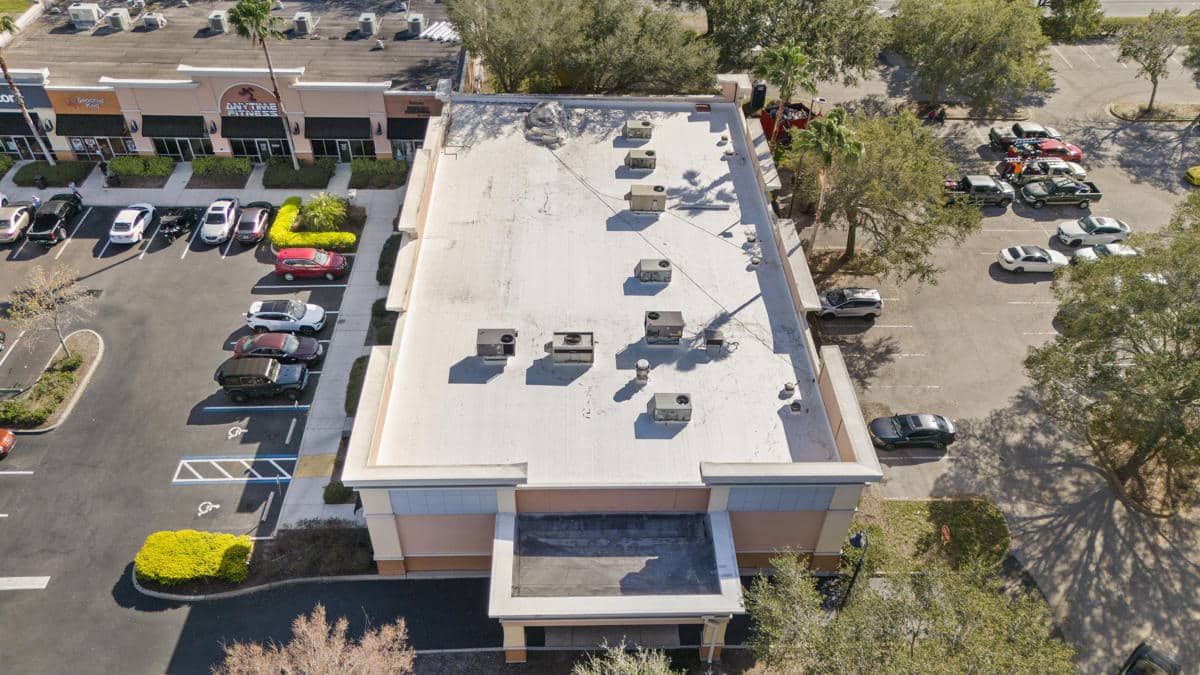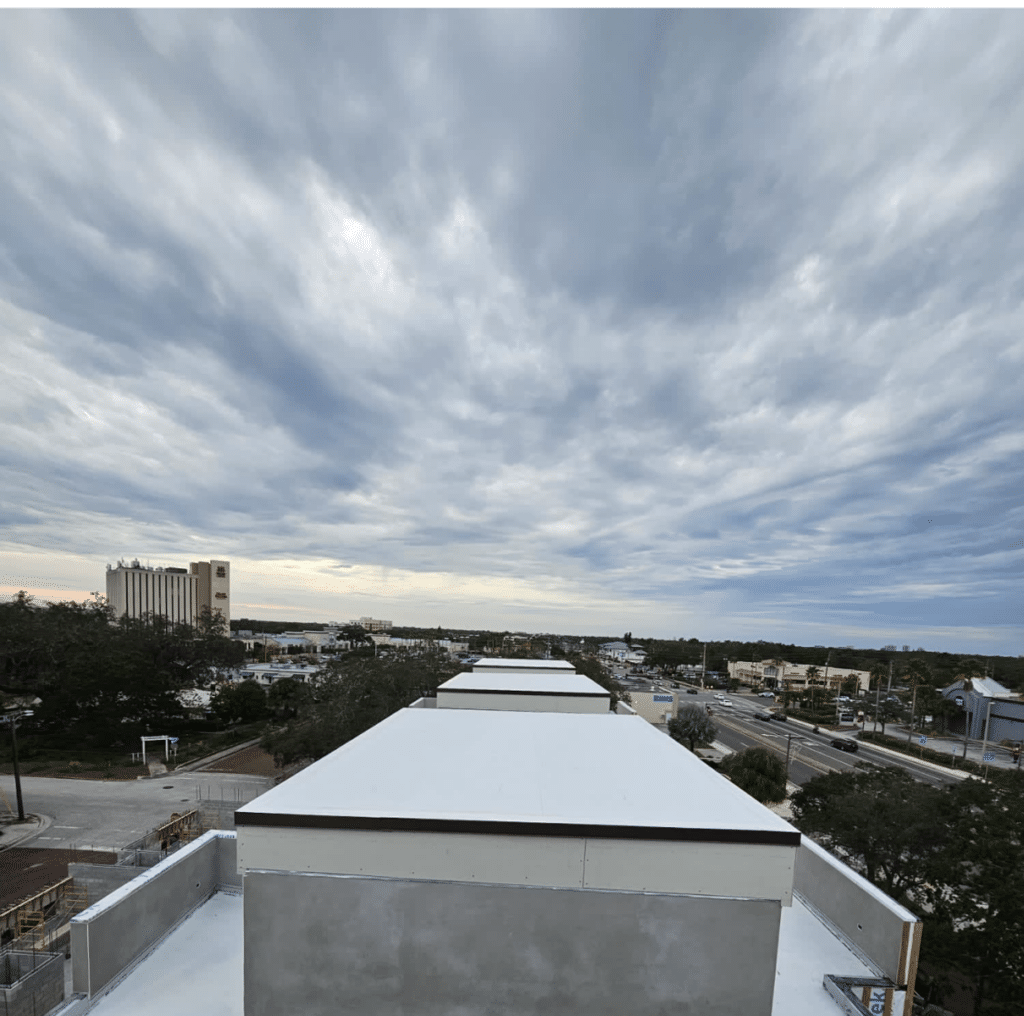TPO Roofs
TPO Roofs
TPO (Thermoplastic Olefin) roofing is a popular choice for flat or low-slope commercial and residential roofs, offering exceptional durability and energy efficiency. This single-ply roofing membrane is known for its resistance to UV rays, chemical exposure, and weathering, making it an ideal option for buildings in various climates. With its combination of affordability, flexibility, and longevity, TPO roofing has become a top choice for modern flat roofing systems.

Installation Steps
Prepare and Clean the Roof Deck
The roof deck must be thoroughly cleaned and prepped before TPO installation. This step involves removing any old roofing materials, debris, or damaged sections to create a smooth and clean surface. For flat and low-slope roofs, this is crucial to ensure the TPO membrane adheres properly and prevents future leaks or failures.
Any cracks, gaps, or damage are repaired at this stage to create a stable foundation for the membrane.
Install Insulation Board
A layer of insulation board is typically installed over the roof deck before the TPO membrane is applied. This insulation helps improve the building’s energy efficiency by regulating internal temperatures and preventing heat loss.
Insulation boards are either mechanically fastened or adhered to the deck, creating a flat, stable base that improves the overall performance of the TPO roofing system.
Lay and Secure the TPO Membrane
The TPO membrane is carefully rolled out across the roof surface. To ensure proper fit and alignment, the membrane is laid in large sheets that are cut to size, covering the entire roof. The membrane is then attached either by mechanical fastening or fully adhered with special bonding adhesives, depending on the project requirements.
For mechanically fastened systems, specialized fasteners secure the membrane to the insulation boards, creating a secure hold without penetrating the surface.
Heat Weld Seams
Once the membrane is in place, the seams where the TPO sheets overlap are heat-welded using a specialized heat gun. This welding process fuses the material together, creating a seamless, watertight barrier that prevents leaks and improves the roof’s longevity.
Proper seam welding is critical for ensuring the TPO roof’s resistance to water and weather damage, especially on flat or low-slope roofs where water can pool.
Install Flashing and Roof Edging
Flashing is installed around roof edges, drains, vents, and any other protrusions to ensure a complete seal. This step is crucial for preventing water intrusion in vulnerable areas. The final touches, such as securing the roof edging and performing a thorough inspection, are completed to ensure the roof is fully sealed and ready for long-term performance.
The roof is then checked to confirm all seams and edges are tightly sealed.
Benefits of TPO Roofs
At Dauntless Roofing Systems, we offer high-performance TPO roofing systems for both residential and commercial properties. TPO roofing provides an excellent balance of affordability, energy efficiency, and durability, making it an ideal choice for flat and low-slope roofs. With a highly reflective surface and strong resistance to UV rays, TPO roofs deliver reliable protection while reducing energy costs.
Our Work
See What Our Customers Are Saying About Us!
Service Area
Let’s get started on your roof project today!
Reach out to our experienced team today for personalized service, expert advice, and a free quote. Whether you need roof installation, repairs, or maintenance, we’re committed to providing you with the best roofing solutions across Florida.








